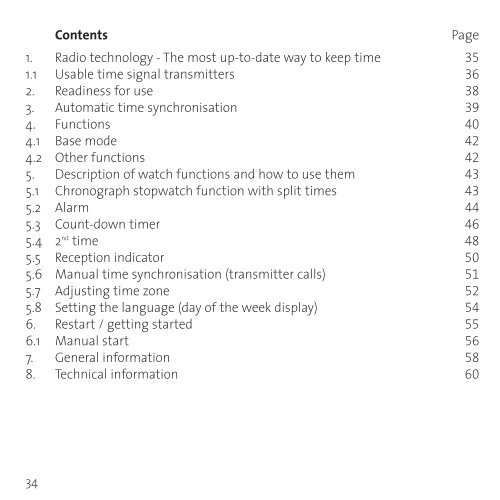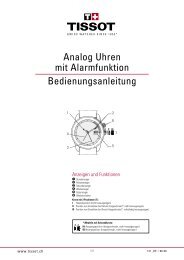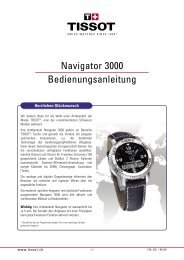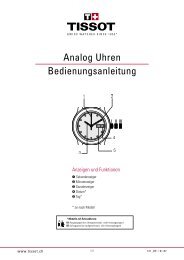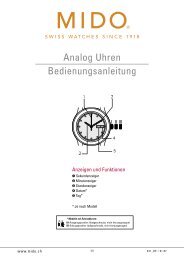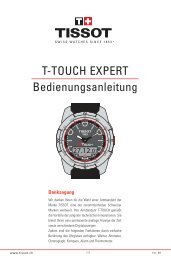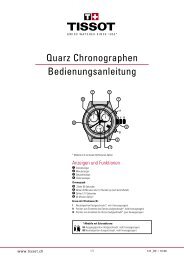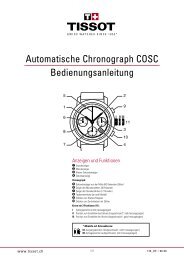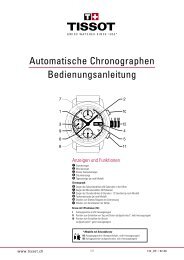Junghans Multifrequenz Alarm Chronograph
Junghans Multifrequenz Alarm Chronograph
Junghans Multifrequenz Alarm Chronograph
You also want an ePaper? Increase the reach of your titles
YUMPU automatically turns print PDFs into web optimized ePapers that Google loves.
34<br />
Contents Page<br />
1. Radio technology - The most up-to-date way to keep time 35<br />
1.1 Usable time signal transmitters 36<br />
2. Readiness for use 38<br />
3. Automatic time synchronisation 39<br />
4. Functions 40<br />
4.1 Base mode 42<br />
4.2 Other functions 42<br />
5. Description of watch functions and how to use them 43<br />
5.1 <strong>Chronograph</strong> stopwatch function with split times 43<br />
5.2 <strong>Alarm</strong> 44<br />
5.3 Count-down timer 46<br />
5.4 2 nd time 48<br />
5.5 Reception indicator 50<br />
5.6 Manual time synchronisation (transmitter calls) 51<br />
5.7 Adjusting time zone 52<br />
5.8 Setting the language (day of the week display) 54<br />
6. Restart / getting started 55<br />
6.1 Manual start 56<br />
7. General information 58<br />
8. Technical information 60<br />
1. Radio technology –The most up-to-date way to keep time<br />
5,000 years have passed since timekeeping began with sundials. In the interim<br />
there have been water clocks, the mechanical clocks of the 13th century and<br />
quartz watches. Now we have the radio-controlled watch.<br />
A watch that in good reception conditions never goes wrong and never has to<br />
be set. The <strong>Junghans</strong> radio-controlled watch is absolutely precise, as it is linked<br />
by radio frequency to the time control systems of the most accurate clocks in<br />
the world.<br />
For Europe this is the Caesium Time Base at the Physikalisch-Technischen<br />
Bundesanstalt in Braunschweig (Germany’s Institute of Natural and<br />
Engineering Sciences).<br />
For North America it is the U.S. Commerce Department’s Caesium Time Base at<br />
the National Institute of Standards and Technology (NIST) in Boulder, Colorado.<br />
For Japan the Ministry of Post and Telecommunication’s Caesium Time Base at<br />
the Commercial Research Laboratory (CRL).<br />
All of these clocks are so accurate, that they are expected to deviate by no more<br />
than 1 second in a million years.<br />
35


